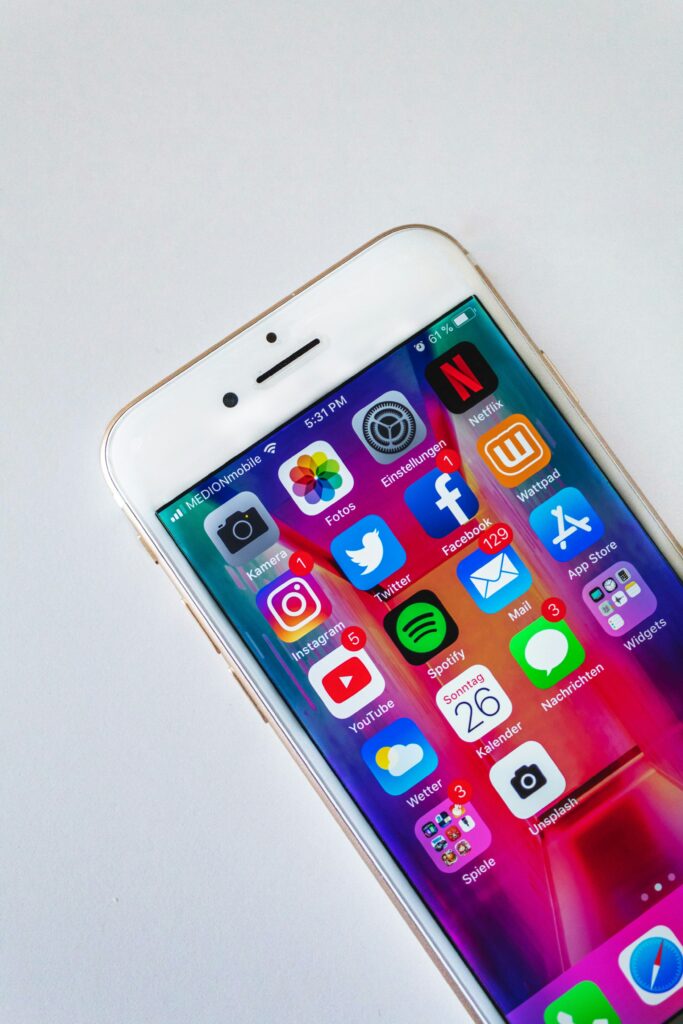Planning an event requires carefully coordinating with countless people to ensure that your speakers, food, venue, and activities create a memorable experience. After you go through all this effort, however, you want to make sure that you build an effective occasion that will align with your brand goals and help drive leads for your business. The key to achieving this objective is having an effective event marketing strategy.
When you have a strong event marketing strategy, it ties everything together so you align all your elements of planning together. This will increase attendance, engagement, and ROI.
As you start thinking about your next event, we will walk you through the steps to creating an effective event marketing strategy.
What is an Event Marketing Strategy?
An event marketing strategy is the overarching guidelines you develop that will help you set your goals for engaging your audience and a plan for how you will reach your target audience and encourage them to register. An event marketing plan is critical to your preparations, regardless of whether you are planning a corporate event, trade show, webinar, or conference. For each type of event, you will outline a strategy that articulates your goals, your audience, and how you will market to them.
Effective marketing is critical to driving registrations from the people most interested in your event. This promotion will build your brand and event awareness so that you can drive lead generation. It culminates in customer engagement as people register, attend, and then remain engaged with your business in the long run.
Step 1 – Define Your Event Goals and Target Audience

The first step in building an effective event is defining your goals and target audience. The better you can define who you want to connect with during your event, the easier it will be to plan.
Setting Clear Objectives
Begin by looking at your overall business goals. Your event marketing objectives should be well-aligned with them.
As your team starts determining what you want to target with your event, refine your goals by ensuring they fit the SMART framework. A SMART goal will include a few important criteria. This means it will be:
- Specific
- Measurable
- Achievable
- Relevant
- Time-bound
You want to write goals such as:
- We will increase attendance by X% compared to our past event
- We will generate Y leads within 1 month of the end of the event
- We will build brand awareness, as measured by an increase of Z% increase in branded search traffic and/or Z% increase in social media followers within 1 month of the end of the event.
Understanding Your Target Audience
You will then work to define your target audience. Consider essential criteria for this targeted audience, including:
- Demographics
- Interests
- Pain points
You can then use data and analytics to segment your audience to create more tailored messaging that will let you speak directly to this audience. Your strategies will differ if you want to reach a B2B or B2C audience. For example, B2B audiences will often prioritize networking opportunities and professional growth. The messaging here will amplify these opportunities. B2C audiences, however, will want more of an emotional connection and experiences. Your messages will reach the individuals and revolve around their interests.
Step 2 – Develop a Comprehensive Marketing Plan
Once you know who you want to connect with, you can start to create a comprehensive marketing plan that will build your registrations.
Choosing the Right Marketing Channels
Start by determining the optimal marketing channels. Consider both your online and offline options. Let’s examine both of these categories.
Online marketing with digital marketing tactics
When looking at your online options, incorporate several different strategies. Some of your top options include:
- Social media. You can build event pages, promote the event, and run ad campaigns.
- Email campaigns. Segment your email lists according to their priorities and encourage people to attend the event based on their interests.
- Paid ads. You can run ads through social media and Google so that you can target people who search for particular terms or fit your target demographics.
Traditional marketing approaches
Offline marketing strategies offer a number of opportunities for event promotion. Here are a few to consider:
- Flyers -If you want to attract the attention of people who patronize certain businesses or attend other events, you can use flyers to let people know about your event.
- Print ads – Print ads in publications that are often read by your target audience can impact awareness.
- Direct mail – if you want to target people in a geographic area or send messages directly to businesses within your target audience, you can use direct mail to attract their attention.
Creating a Timeline and Budget
Once you know all the methods you will use to engage your audience, create a breakdown of your target timeline and how you will allocate resources to maximize your ROI. Know what campaigns need to launch before, during, and after your event. Lay out the timing of your campaigns so you can get all your plans in order to launch effectively.
Tools and templates that will lay out your campaigns and help you organize your budget to make the best possible use of every dollar will help tremendously.
Step 3 – Build a Strong Event Brand and Messaging
To work well with your targeted marketing plan, you also need strong event messaging. This calls for a recognizable brand for your event, something people will recognize and will draw them to register.
Crafting a Compelling Event Value Proposition
Draft a compelling event proposition that captures what sets your event apart and why people should attend. Discuss with your team what makes your event unique compared to others in the industry and what will convince people to attend. Organize your thoughts into unique selling points that you can articulate in conversations and marketing messaging for your different target personas.
Designing a Cohesive Visual Identity
As you build your event brand identity, you will couple that with a visual identity that will make your event more recognizable. This branding will likely tie in with your brand as a whole and will help you build consistency across all your marketing materials.
As you create the event brand design, consider the logo and the colors you want to incorporate. These design elements can tie everything together and enhance potential attendees’ recognition of your event when they encounter information about it.
Step 4 – Leverage Digital Marketing to Boost Attendance

While you build your event, think carefully about all the digital marketing strategies you can employ to boost your attendance. Planning your digital strategy calls for careful thinking about all the different elements of the digital ecosystem.
Social Media Strategies for Event Promotion
Social media is a great way to connect directly with your potential attendees. LinkedIn, Instagram, Facebook, and Twitter make it easy to promote events because they allow you to post visual and text posts and engage directly with a number of followers to build interest. On Facebook, for example, you can create event pages. Across the platforms, you can also create pinned posts that are the first things people see when they click on your profile.
The nature of social media is also to encourage conversation. By promoting your events on social media, you encourage people to ask you questions and start conversations about your event. This increases your brand’s and upcoming conference’s visibility, enticing even more people to register.
Put a variety of different types of social media campaigns to work for you. Organic campaigns use your posts and promotions to get your information in front of your followers, and encourage them to engage so the post then shows up for their connections– spreading the word far. Paid promotions allow you to target different demographics and show them targeted ads that encourage them to learn more about the event.
To encourage conversations that will spread news about your event organically, consider posts such as:
- Behind-the-scenes looks at the planning of your event and what you will offer
- Exclusive interviews, such as with highlighted speakers that can fan the excitement
- Countdowns that build anticipation about the event.
All these types of posts will create engaging content that builds anticipation.
Email Marketing Practices
Email marketing should also play a cornerstone role in your event promotion. As you build your email list, you have gathered some information about people and their priorities. This allows you to accurately segment the email lists so that you can create tailored messages based on the key event selling points that will resonate with a given segment.
As you draft your emails, focus on your subject lines and your CTAs. A subject line that communicates value and urgency will get people to open, while a CTA that encourages action will bring in registrations.
You can then use drip campaigns to maintain attendee engagement, getting them excited about the upcoming conference and all that it will offer.
Search Engine Optimization (SEO) for Event Pages
Of course, as you build your online event presence, you can’t neglect SEO and the event pages themselves. Optimizing your landing page for your event brand and relevant terms will bring in organic traffic right off the search engines.
Once you have built the pages, use blogging and content marketing to increase visibility. Keep people informed about your planning process and exciting updates. It will boost you in the search engines and give people even more reasons to register.
If you’re hosting a local event, make sure you incorporate local SEO. This means promoting the event information in local publications, updating all your information on Google Maps, and ensuring that your optimization strategies employ local keywords.
Step 5 – Partner with Influencers, Sponsors, and Media

To further build excitement about your event, consider what influencers, sponsors, and the media can do for your event.
Collaborating with Industry Influencers
Industry influencers already have a large following of relevant people. If they agree to promote your event, you will get word about your event to all these people, and it will come from a source they trust.
Find influencers by looking through big names in your industry. Evaluate their audience to find the ones that align best with your target. You can then negotiate a deal for them to promote the event.
You can also turn your standard attendees into influencers. Encourage user-generated content promoting the event and word-of-mouth promotions. Consider discounts or perks for those who post content or refer friends who register.
Maximizing Sponsorship Opportunities
Sponsors not only draw attendees, but they also help bolster your event budget and make it easier for your business to profit.
The key is creating enticing sponsorship packages. Find out about the perks people want, such as exclusive networking access or VIP status upgrades. Then design packages that will draw people in.
As you pitch the idea, make it clear to potential sponsors what makes your event so appealing. Have clear points about what they will get out of the arrangement and what separates your event from others.
Engaging with press media outlets
The media takes on many forms today. You can begin by working with bloggers and journalists. Find those relevant to your business and consider offering perks for those who can cover the event. This might include free passes or access to exclusive interviews.
You will also want to produce press releases. These announcements can highlight important event news, such as the confirmed keynote speaker. These announcements build excitement and get news out there even more.
Step 6 – Utilize Event Technology for Enhanced Engagement
Event technology can enhance your event by making it easier to organize all the moving parts. Let’s examine these options more closely.
Event Registration and Event Management Tools
When you have the right platform working for you, it can make everything from event registration to floor planning significantly easier.
Strong platforms will offer some key capabilities that enhance the event planning process. Some critical elements include:
- A seamless registration process so you can get attendees signed up and their information tracked without any unnecessary obstacles.
- Attendee tracking, so you can see what keeps your attendees engaged and how your day-of attendance compares to registration
- Automated communications to remind people of the event and keep them interested
- Exhibitor management, empowering you to track your exhibitors and make sure they have what they need to have a positive experience as well.
The platform should make it easy for you to optimize the registration process so you can reduce the number of people who drop out of the conversion process. This means creating straightforward forms that are easy to fill out, making sure the steps are all user—and mobile-friendly, and designing your pages to provide clear instructions and expectations. Make sure payment is easy to manage as well.
While many platforms have become popular for what they offer event planners, A2Z Events tops the list because of the comprehensive event management solutions it offers. The exhibitor solutions and attendee engagement tools also make it easier to keep people interested and nurture your attendees into leads.
Event Apps and Interactive Tools
As you employ technology to help you plan the event, do not forget about the value technology can also offer in the form of event apps and interactive tools. Mobile apps can easily connect all your attendees and build engagement by helping to organize networking and session scheduling so people are on top of the features that matter to them the most. Push notifications can also keep people notified about what is going on during the event to reduce confusion and frustration.
Within the mobile app, you can also build communication with the attendees much more easily. Tools like live polling, Q&A sessions, and gamification will also encourage audience members to pay attention and interact with presenters during the event.
Step 7 – Execute Onsite Marketing Strategies
Even once your event kicks off, you still want to apply onsite marketing strategies to keep your attendees engaged.
On-the-Ground Branding and Engagement
Your on-the-ground marketing starts with signage and banners. Remember all those branding logos and colors you chose for your event? Make sure they’re displayed prominently around the event area. Since social media dominates conversation today, you also want to make sure your attendees can make Instagrammable moments. That means creating backgrounds and displays where people can easily snap fun photos and create memorable souvenirs of your event.
Live Streaming and Real-Time Content
Live streaming can be a great way to include people who might not be physically present at your event. Several platforms make it easy for you to live stream events, including YouTube and Facebook. Let people know ahead of time that you plan to live stream certain aspects, such as your keynote speaker or important breakout sessions. Then promote the online streaming so that people know when to tune in and watch. This can increase engagement for your event and make people more likely to attend your events in the future.
You can also keep people engaged through live tweets, stories, and reels. This can be done hand-in-hand with your attendees. Encourage people to post pictures and live tweets from your event using a common hashtag to start a conversation. Encourage people to discuss what they are learning or doing throughout the conference and participate as a brand.
Step 8 – Post-Event Follow-Up and ROI Analysis

Once the event is over, it’s time to sit down with your team and do your post-event analysis. While this might seem like an easy step to miss, your analysis will give you the guidance you need to plan even better events in the future and make sure that you maximize your ROI from this event.
Gathering Feedback and Data
To perform this analysis, you need to get started with post-event surveys and attendee feedback. Reach out directly to your attendees and ask them what they thought about your event, the speakers, logistics, and overall value. You can send out surveys to many of your attendees and ask them questions about how they would rate different aspects of the event. You can also speak directly to some high-profile attendees, such as your VIPs, and get personalized feedback about what they thought about different aspects and what could be improved and what worked really well.
Once you collect all this information, it’s time to run some analyses to see what the overall impression was. Software can make it easy to start to bring together the different statistics from multiple choice or rating questions, and you can use some qualitative analysis tools to help you find trends and keywords in open-ended questions. This insight will let you see where your biggest strengths and weaknesses lie moving forward.
Repurposing Event Content
The event contact you created to promote your event and during the event itself can also continue to benefit your brand and build your audience. Event pictures, quotes, and information can be a great tool for promoting future events.
You can also use the information and sessions from the event to develop new blog posts and videos. Any data collected during the event can make a great case study. All these different strategies will help every piece of content you create go even further and maximize your ROI.
Measuring Event Success and ROI
Finally, it’s time to sit with your team and dive into your event success metrics. Your key performance indicators or KPIs, are the metrics you use to determine whether or not your event was a success. Remember those goals you set in the beginning? Now it’s time to see if you met or exceeded those goals. Look at numbers such as how many people attended compared to past events, how engaged your audience was, and what people had to say about your brand when they left. Track your metrics specifically as they relate to your goals and to give you an impression of how people responded to the event and the impact it had on your brand and leads.
Once you have this information, it’ll be easier to see where you want to make adjustments for future events. You can evaluate how well your marketing, attendee engagement, and lead generation aligned and where you need to shift your focus.
Conclusion
Your event marketing strategy is the cornerstone of effective event planning. It ties everything together and will walk you through defining your goals, your audience, and how you want to reach them.
If you are preparing your next event, think carefully about how you can implement these strategy-building steps to create a successful occasion that drives brand growth.










